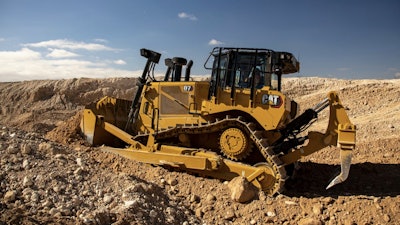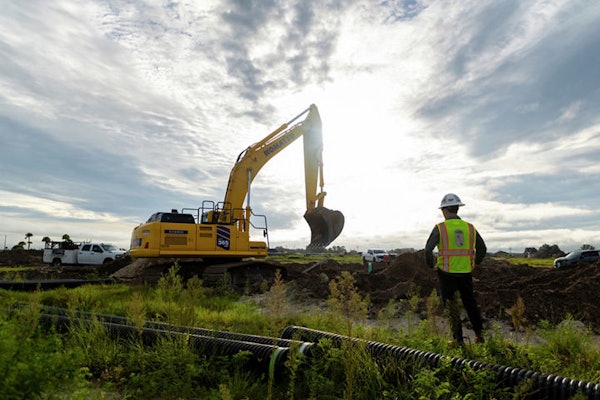
Lower sales volumes and the impact of lower pricing saw Caterpillar’s sales and revenues drop year-over-year in its first quarter of the year, with North American construction sales down 24.2%.
The manufacturer saw $14.2 billion in first-quarter revenue, down 10% from $15.8 billion in last year’s first quarter. A decline in sales volume to $1.1 billion – mainly due to slower growth in dealer inventories – and negative price realization of $250 million were primary contributing factors. Price realization measures the net difference between equipment's listed price and the actual selling price within the quarter.
Global construction revenue was down 19% to $5.2 billion, driven by a $820 million decline in sales volumes and a $355 million drop in price realization. Total construction profit came in at just over $1 billion, down 42% from $1.8 billion one year ago.
In North America, construction revenue fell 24.2% to $2.9 billion from $3.8 billion in last year’s first quarter. This was the largest regional decline for construction revenue among all Caterpillar’s regions.
Dealer inventories only rose $100 million in the quarter versus a $1.4 billion increase in Q1 2024. Caterpillar is expecting machine dealer inventory to be unchanged year-over-year at the end of 2025.
Operating profit margin in the quarter dropped from 22.3% to 18.1%, and consolidated operating profit fell 27% to $2.6 billion.
Caterpillar’s forecast, assuming the cost impact of the current tariff levels don’t change for the year, would see 2025 sales come in slightly below 2024 levels. Prior to the implementation of the Trump administration’s tariffs, Caterpillar had forecast 2025 sales to be flat year-over-year.
Caterpillar said it expects additional costs of $250 million to $350 million in its second quarter from tariffs, net of initial mitigation actions and cost controls.
Speaking during the earnings call, incoming Caterpillar CEO Joe Creed said on tariffs, “As you would expect, we are evaluating a broad range of longer-term mitigation actions. Many of these actions require more time to implement and are more difficult to reverse and, therefore, require more clarity and certainty on the long-term environment around tariffs. As I mentioned, the situation remains fluid, and we will continue to monitor it closely.”











